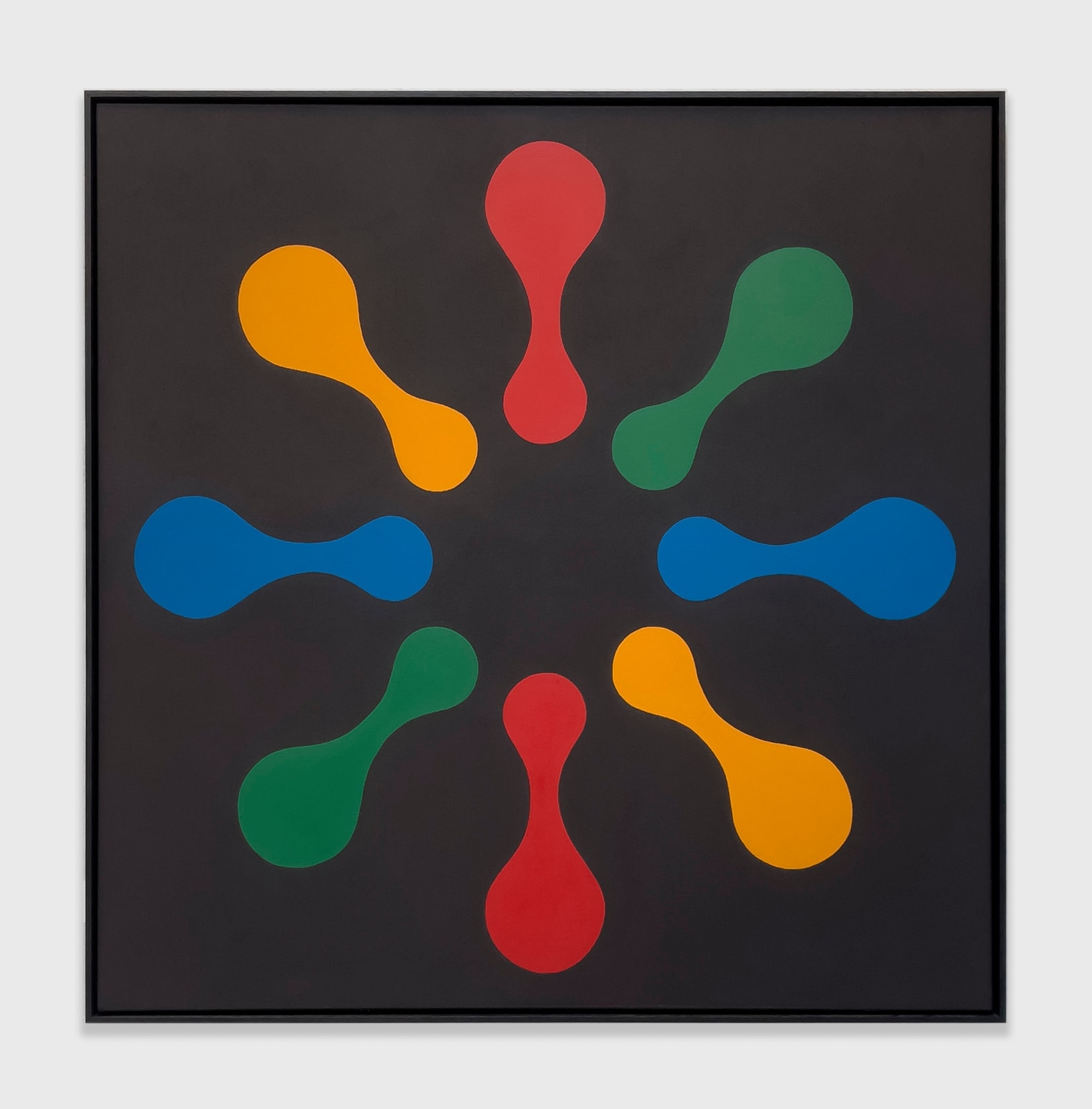
Philip Taaffe United States, b. 1955
Signal, 1986
oil on canvas
152.5 x 152.5 x 3.9 cm
60 1/16 x 60 1/16 x 1 8/16 in
framed: 156.5 x 156.5 x 5.5 cm
60 1/16 x 60 1/16 x 1 8/16 in
framed: 156.5 x 156.5 x 5.5 cm
Philip Taaffe's painting 'Signal' (1986) reflects his signature style of blending historical ornamentation and decorative elements with references to Op-art to create an illusionistic effect. In 'Signal', Taaffe uses red,...
Philip Taaffe's painting 'Signal' (1986) reflects his signature style of blending historical ornamentation and decorative elements with references to Op-art to create an illusionistic effect. In 'Signal', Taaffe uses red, green, yellow, and blue forms set against a black background, moving away from a monochrome base to produce rhythmic, abstract, and floral motifs layered with geometric shapes. Drawing inspiration from artists like Barnett Newman, Bridget Riley, and Hans Arp, Taaffe also incorporates visual elements influenced by his travels, referencing Roman mosaics, Islamic art, Byzantine altarpieces, and more. Signal can be seen as a reinterpretation of Paul Feeley’s 1968 work Untitled (April 15), merging historical and contemporary influences into a cohesive whole.
Since the early 1980s, Taaffe's artistic practice has continuously evolved, utilizing diverse processes and materials such as collage, linocut, woodblock, rubber stamping, silkscreen, marbling, and decalcomania, incorporating elements inspired by various cultures. By crossing cultural boundaries in his art, Taaffe critically engages with abstraction in a reflective manner. His works have been featured in numerous museum exhibitions, including the Carnegie International, the Sydney Biennial (twice), and the Whitney Biennial (three times). His works are now part of major public collections, such as the Museum of Modern Art in New York, the Philadelphia Museum of Art, the Whitney Museum of American Art, and the Reina Sofia in Madrid.
Since the early 1980s, Taaffe's artistic practice has continuously evolved, utilizing diverse processes and materials such as collage, linocut, woodblock, rubber stamping, silkscreen, marbling, and decalcomania, incorporating elements inspired by various cultures. By crossing cultural boundaries in his art, Taaffe critically engages with abstraction in a reflective manner. His works have been featured in numerous museum exhibitions, including the Carnegie International, the Sydney Biennial (twice), and the Whitney Biennial (three times). His works are now part of major public collections, such as the Museum of Modern Art in New York, the Philadelphia Museum of Art, the Whitney Museum of American Art, and the Reina Sofia in Madrid.
Provenance
P. Maenz, Köln, GermanyR. Beuth, Köln, Germany
Jablonka Gallery, Köln, Germany
MARUANI MERCIER Gallery, Brussels, Belgium
Exhibitions
1986, MARUANI MERCIER, October 2020 – January 2021, Brussels, BelgiumPhilip Taaffe: L'envoi, JMM Gallery, September – November 2015, Brussels, Belgium
Join our mailing list
* denotes required fields
In order to respond to your enquiry, we will process the personal data you have supplied to communicate with you in accordance with our Privacy Policy. You can unsubscribe or change your preferences at any time by clicking the link in our emails. This site is protected by reCAPTCHA and the Google: Privacy Policy and Terms of Service apply.